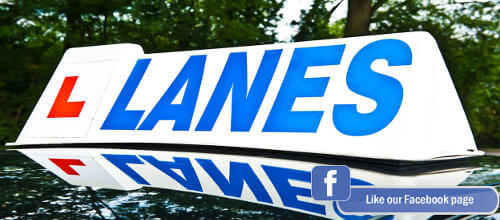
If you’re booking a trip away this year, make sure you know everything there is to know about driving abroad. Renting a car or taking your own can be more economical and ensures you have the freedom to go wherever you want. This means there’s no need to rely on public transport or risk getting ripped off by local cab companies. However, there are rules that you will need to follow. You’ll need to make sure you have the correct paperwork to drive abroad and observe local laws. Check out our helpful tips to make sure you’re driving safely and legally when you go abroad.
What do I need to travel abroad?
No matter where you go in the world, if you want to drive a car it is essential that you take your valid UK driving licence photocard with you. Make sure that it hasn’t expired or isn’t near its expiry date. If this is a concern you can easily get a new licence in as little as 5 days by applying online. If taking your own car, you will need your vehicle’s log book (V5C). This contains all essential information about your vehicle and identifies you as the registered owner. If you run into any problems when abroad, this is an essential document for your insurance and for any mechanics. You will also need your insurance certificate that verifies you have a proper policy in place. While you will hopefully not need it, it is better to be safe than sorry.
What is an international driving permit?
You may also need to get an international driving permit before you travel. If your driving licence was issued in the Isle of Man, Gibraltar, Jersey, or Guernsey, or you have a paper version instead of a photocard then you will need an IDP alongside your licence. It only costs £5.50 and is quick and easy to get hold of. You can get an international driving permit over the counter from a post office. You just need to be a UK resident with a licence issued in the UK, Jersey, Guernsey, the Isle of Man, or Gibraltar. Some countries require an IDP as standard to drive on their roads, so be sure to check before you travel.
What do I need to drive in Europe?
Luckily, driving in most of Europe is still relatively simple. You will need your valid UK licence, vehicle’s log book, and insurance certificate to drive your own car. To rent a car, all you will need is your photocard licence. The rental company will already have third party liability insurance, but will offer other policies regarding personal injury, damage, or theft and it’s up to you to weigh up if you need it. You do not need an international driving permit to drive or rent a car in EU member states, Andorra, Bosnia and Herzegovina, Iceland, Liechtenstein, Norway, Switzerland, or Serbia. If you are travelling in Europe outside of these areas, be sure to check the local requirements.
Driving in Europe
If you’re travelling from the UK, there are a few key differences to note when driving on the continent. We’ve prepared a quick list but there are many differences between the different countries, so be sure to double check the specific laws where you are travelling.
- Remember to drive on the right and overtake in left hand lanes. This can be disorientating so try and practice in a quieter area before venturing out onto major roads.
- Speed limits in many countries are posted in kilometres, not miles. 90 kilometres is equivalent to approximately 55 miles and 130 km to around 80 miles.
- Countries like France, Spain, and Italy make use of toll roads. Check your route in advance and have cash or a card to hand to pay these tolls when you encounter them.
- Some countries like Germany, Austria, and Finland will require you have winter tires for certain months of the year. Make sure you are safe and compliant with local laws.
What do I need to drive in the USA and Canada?
You can drive in both the USA and Canada with a valid UK photocard licence. However, some states in the US, and some car hire companies in Canada require an international driving permit, so double check where you will be travelling and get hold of the necessary paperwork. You will need to be at least 21 years of age to rent a car, with some companies only renting to those 25 and older. You will also need your valid UK passport and other travel documents like visas to verify you are in the country legally before renting any vehicles. Car insurance for your vehicle is not compulsory in every US state, but we would recommend taking a policy to cover yourself in the event of an accident.
Driving in the USA and Canada
There are several differences between North American roads and those in the UK and Europe. The US and Canada are made up of states, provinces, and territories that can each set their own laws. Be sure to see where you’ll be driving and research the specific laws of that area.
- In North America drive on the right and overtake using the left-hand lanes of larger roads. Where possible, practice in a quiet area before jumping into busy city centres or motorways.
- You may turn right at a red light in both countries. If there is no cross traffic, you may make a right turn into the rightmost lane when the light is still red.
- 38 US states and 4 Canadian provinces make use of toll roads. Know ahead of time what you will need to pay and have cash, card, or a transponder
- Many junctions are controlled by 4-way intersections, not roundabouts. Normally, the first car to arrive at the junction has the right of way. If you arrive at the same time as another driver, priority goes to the rightmost vehicle, or whoever is turning right.
You’re ready to go! Wherever your adventures take you this year, be sure to drive safely and be careful to observe local traffic laws. Look up the specific laws in the cities or territories you will be driving through to be thoroughly clued up on driving abroad.
Need to pass your test quickly in time for your big road trip? Book in lessons with our qualified instructors. Or, if you’ve passed but are still feeling a little nervous about driving abroad, why not book a refresher lesson? With a century of experience behind us, Lanes School of Driving has everything you need to get you on the road for your next adventure. To find out more just give us a ring on 020 8166 5678 or email .

